Avoided Emissions to Visualize the Ability of Companies to Provide Solutions through Innovation
(in provisional translation)
(English ver.) 2024-02-22
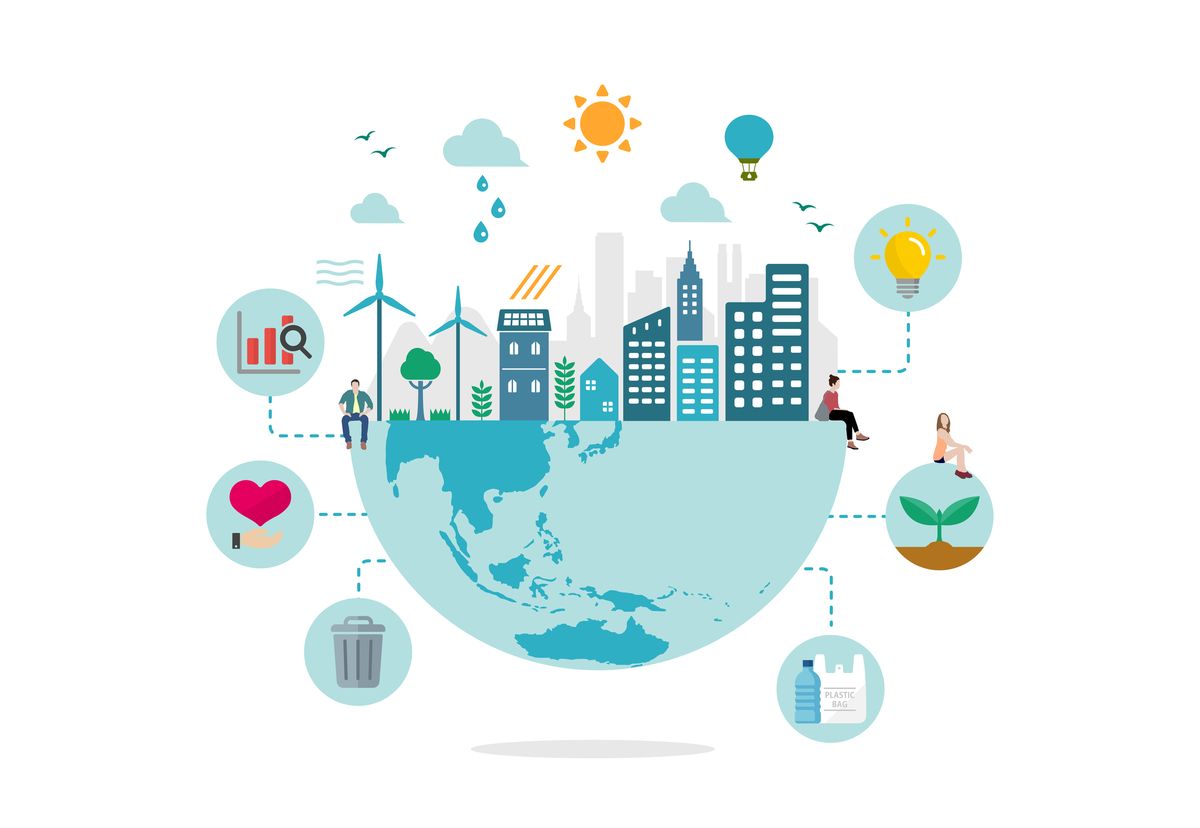
To achieve carbon neutrality by 2050, it is essential for companies to reduce their own emissions through various decarbonization solutions. It is also important for them to promote innovation that contributes to emission reduction by other companies. The new concept of avoided emissions is attracting attention in considering companies’ efforts to reduce emissions. In other words, if a company produces products that contribute to society-wide emission reduction, that contribution deserves to be valued. This article explains avoided emissions, which was also a subject discussed at the 2023 G7 Summit.
Companies that help reduce society’s GHG emissions should be valued
Greenhouse gas (GHG) emissions pose risks not only to the planet but also to the emitters themselves in times when decarbonization is required. A company’s GHG emissions and its emission reduction efforts are becoming critical criteria for investors to analyze the company’s performance and make investment decisions. If a company is perceived as not making sufficient efforts to reduce emissions, it may struggle to secure investments and loans from financial institutions.
The following frameworks are being developed to encourage companies’ efforts for emission reduction:
- Scope 1, 2 and 3, the concept of GHG calculation through the entire supply chain
- TCFD (The Task Force on Climate-related Financial Disclosures)
Under these circumstances, discussions have started on the new concept of “avoided emissions” as a new type of indicator to evaluate a company’s contribution to society-wide GHG reduction as its ability to solve social challenges.
What is a company’s contribution to society-wide GHG reductions? For instance, if an electrical appliance manufacturer sells air conditioners that save energy and reduce GHGs, and if these products are widely used, this will contribute to GHG reduction in the society as a whole.
The concept of avoided emissions is to calculate how much a company has contributed to society-wide emission reduction, through the popularization of green products or services, and to incorporate this into the company’s evaluations. In other words, it is a new indicator for evaluating a company’s ability to provide solutions to social challenges to reduce GHG emissions.
Conceptual graph of avoided emissions
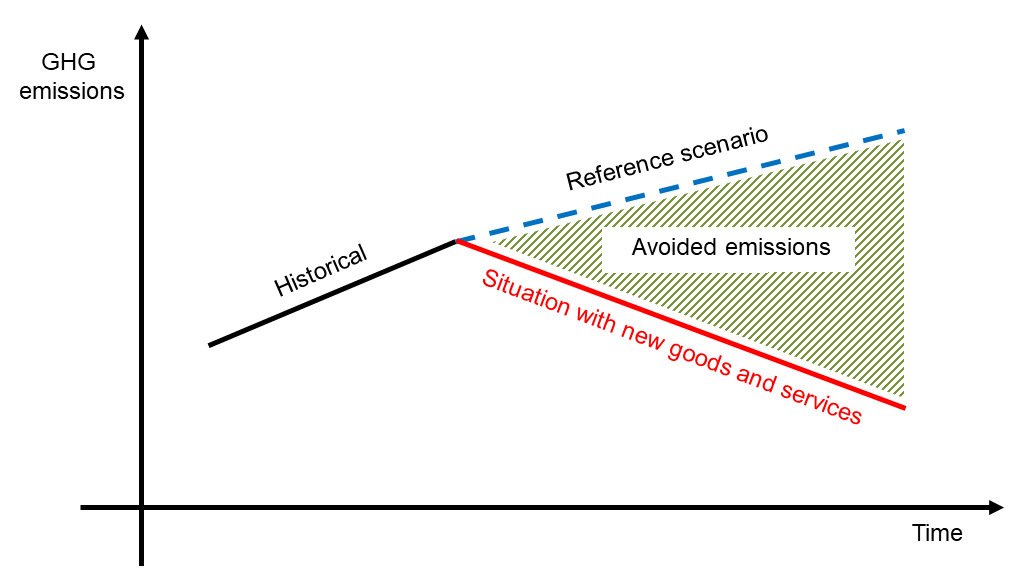
Avoided emissions do not simply replace the Scope 1, 2 and 3 emissions. Let us look at the following example:
A brown company produces air conditioners that emit 10 kg-CO2 per unit during operation. In 2021, four units were sold and the total emissions were 40 kg-CO2. In 2022, a green company introduces new air conditioners that emit 2 kg-CO2 per unit. Three air conditioners from the brown company are replaced by those from the green company. As a result, the total emissions from these air conditioners were 16 kg-CO2 in 2022. The reference scenario is based on the assumption that all the air conditioners are sold by the brown company. The avoided emissions from the reference scenario are 24 kg-CO2, which can be considered as the green company's contribution.
Calculation of avoided emissions (example)
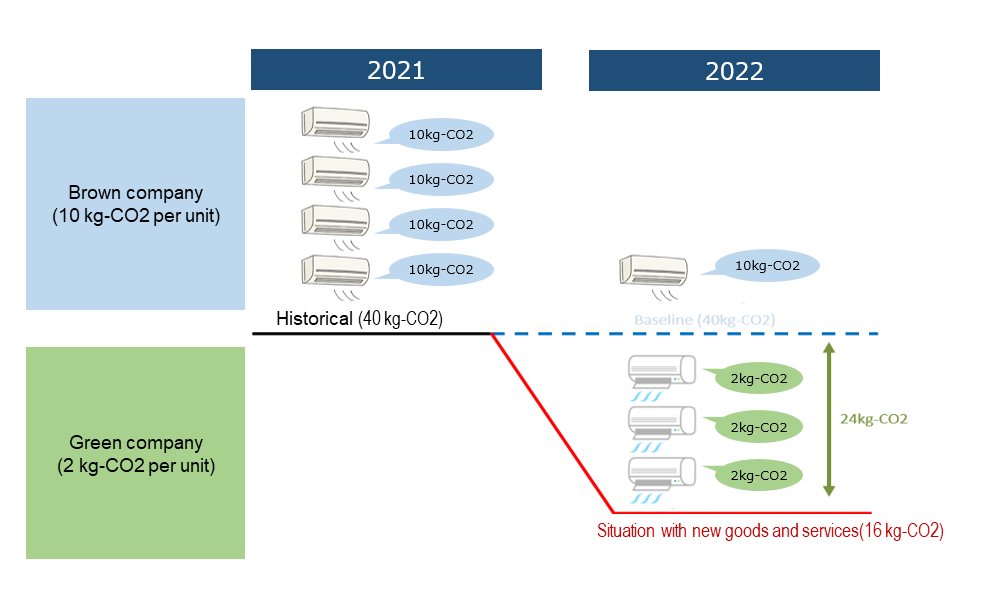
The green company did not sell air conditioners in 2021, so its Scope 3 emissions* increased from 0 in 2021 to 6 kg-CO2 in 2022. However, society-wide emissions were reduced by introducing the green company’s air conditioners. The company’s efforts can be properly evaluated by taking avoided emissions into account.
*Scope 3 emissions are indirect emissions that occur throughout the value chain. In the example above, Scope 3 emissions of the products are emissions from product usage.
Calculation of Scope 3 emissions and avoided emissions (Example)
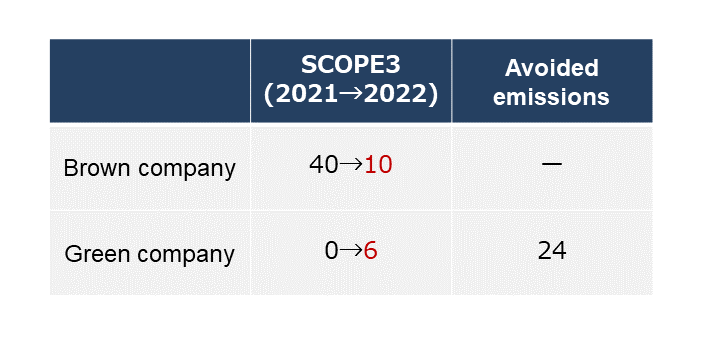
For instance, Siemens, a German company, shows Scope 1, 2, and 3 emissions together with avoided emissions in its Sustainability Report 2022 (Page 72.)
The report clearly and quantifiably presents the company’s policy to increase avoided emissions while reducing emissions with risks.
Promoting company efforts for innovation by evaluating avoided emissions
The background to the focus on these avoided emissions is from the Paris Agreement’s goal of pursuing efforts “to limit the temperature increase to 1.5°C above pre-industrial levels.”
If the reduction target were less ambitious and more realistic, companies might be able to achieve it by curbing their activities and reducing GHGs. However, the 1.5°C limit is so ambitious that it is considered unattainable with current efforts. Achieving the goal requires innovation beyond the existing technologies.
Therefore, we need a mechanism that allows companies to grow and decarbonize through innovation, so that emissions reductions can be achieved while ensuring economic growth.
If avoided emissions are recognized, companies can raise their evaluation by making efforts to develop decarbonization technologies that contribute to emission reduction in society. In this way, they can consider emission reduction as an opportunity for growth. To achieve this, it is necessary to develop an environment in which new values are shared internationally to recognize avoided emissions so that investments and finance will flow to companies with such values.
Toward standardizing avoided emissions and preventing green washing
Although the concept of avoided emissions has been discussed to a certain extent in Japan, it has not been seriously considered in international trends. This was because there was no widespread corporate commitment to net zero, and the recognition of Scope 1, 2 and 3 emissions as an indicator of corporate risk, especially Scope 3, had yet to be developed.
Now that corporate commitments to net zero are becoming common and efforts to address Scope 3 emissions are required, the Japanese government, together with the World Business Council for Sustainable Development (WBCSD), started to create a concrete mechanism for evaluating avoided emissions in 2022. Avoided emissions were discussed at the Global GX Conference in Japan in 2022, and the Japanese government and the WBCSD co-hosted an event on this concept at COP27.
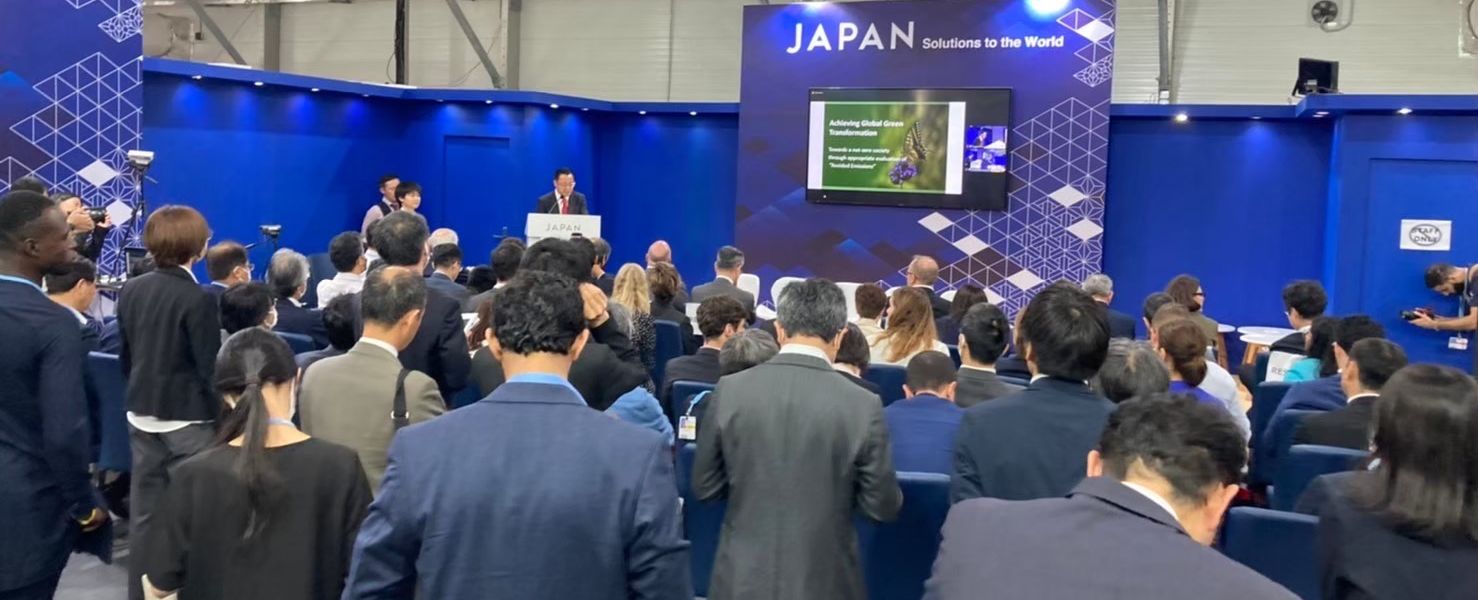
A scene from the event co-hosted by
the Japanese government and the WBCSD at COP27
Based on these discussions, the WBCSD released the Guidance on Avoided Emissions on March 22, 2023, to prevent companies from over-quantifying avoided emissions, showing only avoided emissions without adequate efforts to reduce their own emissions, and misusing avoided emissions, which can be criticized as green washing.
https://www.wbcsd.org/Imperatives/Climate-Action/Resources/Guidance-on-Avoided-Emissions
The guidance set out the necessary conditions, including that:
- The technology is consistent with the latest climate science.
- The technology contributes directly to emissions reductions.
- The company sets informed targets covering Scopes 1, 2 and 3.
The guidance also indicates the following benefits for companies undertaking avoided emissions assessments:
- Transforming business models to deliver innovative climate change solutions and changing the mindset of the companies’ employees.
- Raising the priority of technologies to maximize avoided emissions within the company.
- Stronger alignment with the company’s vision and mission by shifting the focus from simply reducing the current emissions to understanding how to deliver what the world needs.
The G7 Ministers’ Meeting on Climate, Energy and Environment held in Sapporo during Japan’s presidency issued the Ministers’ Communique with an annex titled Conclusions regarding the Industrial Decarbonization Agenda, which recognized the importance of avoided emissions (No. 51 of the Communique.) The G7 Hiroshima Summit also clearly referred to the concept of avoided emissions in its outcome document.
Concrete steps are being taken based on these considerations. For example, studies are underway to promote the use of avoided emissions in financial institutions, and discussions have already begun on international standardization in the electronics sector. In a world full of social challenges, the future of avoided emissions as an indicator of a company's problem solving capability will be closely watched.
Divisions in Charge
About this article
Global Environmental Affairs Office, Industrial Science, Technology and Environment Policy Bureau, METI
About the Special Contents
Research and Public Relations Office, Commissioner’s Secretariat, ANRE
![]() The original Japanese text of this article; Click here
The original Japanese text of this article; Click here